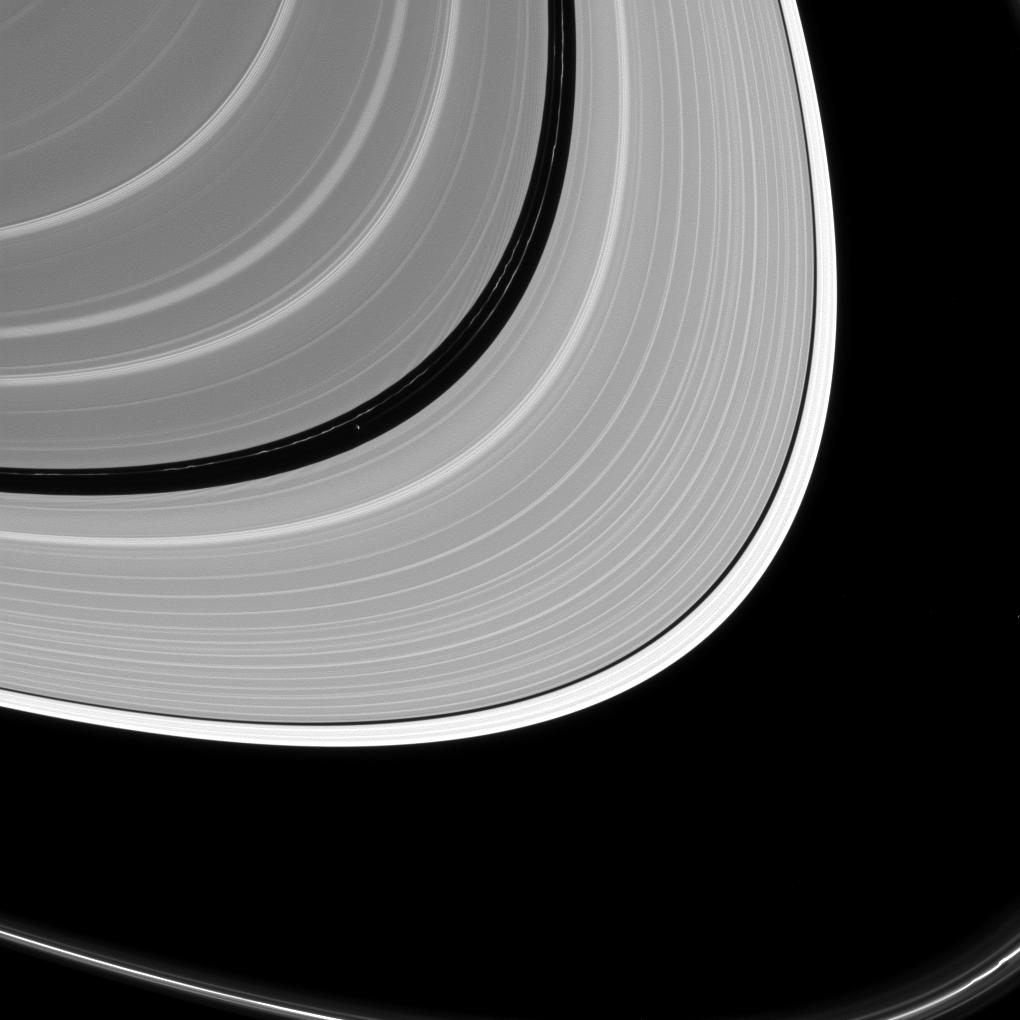Pan may be small as satellites go, but like many of Saturn's ring moons, it has a has a very visible effect on the rings.
Pan (17 miles or 28 kilometers across, left of center) holds open the Encke gap and shapes the ever-changing ringlets within the gap.
In addition to raising waves in the A and B rings, other moons help shape the F ring, the outer edge of the A ring and open the Keeler gap.
This view looks toward the sunlit side of the rings from about 8 degrees above the ring plane. The image was taken in visible light with
the Cassini spacecraft narrow-angle camera on July 2, 2016. The view was acquired at a distance of approximately 840 000 miles (1.4 million
km) from Saturn and at a sun-Saturn-spacecraft, or phase, angle of 128 degrees. Image scale is 5 miles (8 km) per pixel. Pan has been
brightened by a factor of two to enhance its visibility.
